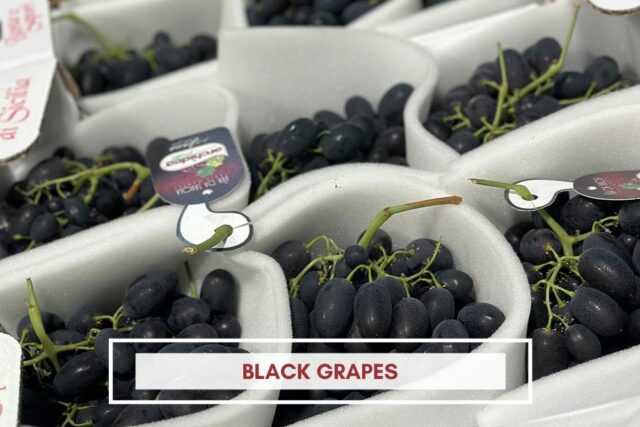- Description
Description
White grapes are a versatile and elegant ingredient that can elevate the menu of a high-quality European restaurant. Known for their sweet, floral flavor and juicy texture, white grapes bring a refreshing and sophisticated element to a variety of dishes. Their delicate appearance and subtle acidity make them an ideal choice for both savory and sweet culinary applications. Here’s how and why white grapes can be a valuable addition to fine dining menus:
Why Choose White Grapes?
White grapes are celebrated for their natural sweetness, crisp texture, and visual appeal. Their versatility allows them to complement a wide range of dishes, from light appetizers to decadent desserts. Rich in antioxidants, vitamins, and natural sugars, white grapes are a health-conscious ingredient that also appeals to diners seeking balanced flavors. Their ability to pair seamlessly with cheeses, meats, and herbs makes them indispensable in a gourmet kitchen.
How to Use White Grapes
- Raw in Salads: Fresh white grapes add sweetness and a burst of juiciness to salads, balancing bitter greens and sharp cheeses.
- Roasted or Grilled: Roasting or grilling intensifies their natural sugars, creating a caramelized flavor that pairs well with savory dishes.
- In Sauces and Glazes: White grapes can be blended into sauces or reduced into glazes, providing a sweet and tangy element to meat and fish dishes.
- Pickled or Fermented: Pickled white grapes add a zesty contrast to rich foods like pâté or charcuterie boards.
- In Desserts: Their natural sweetness makes them ideal for tarts, sorbets, and compotes, adding a fresh and fruity note to desserts.
Dishes Featuring White Grapes
- Salads: Add halved white grapes to a salad with arugula, candied walnuts, and goat cheese, dressed with a light white wine vinaigrette for a refreshing starter.
- Roasted Side Dish: Roast white grapes with thyme and olive oil, and serve alongside roasted chicken or duck for a sweet and savory combination.
- Sauces for Meat: Create a white grape and shallot reduction to drizzle over grilled pork tenderloin or seared duck breast.
- Fish Pairings: Use sautéed white grapes in a butter sauce for pan-fried sole or salmon, adding a subtle fruity accent.
- Desserts: Incorporate white grapes into a fruit tart with custard, or serve them poached in white wine and honey with mascarpone for a light yet elegant dessert.
- Cocktails and Beverages: Use white grape juice as a base for cocktails or sparkling beverages, garnishing with fresh grapes for added sophistication.
Why White Grapes in Fine Dining?
White grapes combine flavor, texture, and visual appeal, making them a standout ingredient for fine dining. Their delicate sweetness and versatility allow chefs to craft dishes that are both innovative and balanced. Whether used in fresh salads, as a caramelized side for meats, or as the star of a dessert, white grapes bring a touch of elegance to any menu. Their ability to complement bold and subtle flavors alike ensures they leave a lasting impression on diners, making them a valuable addition to the repertoire of high-quality European restaurants.





